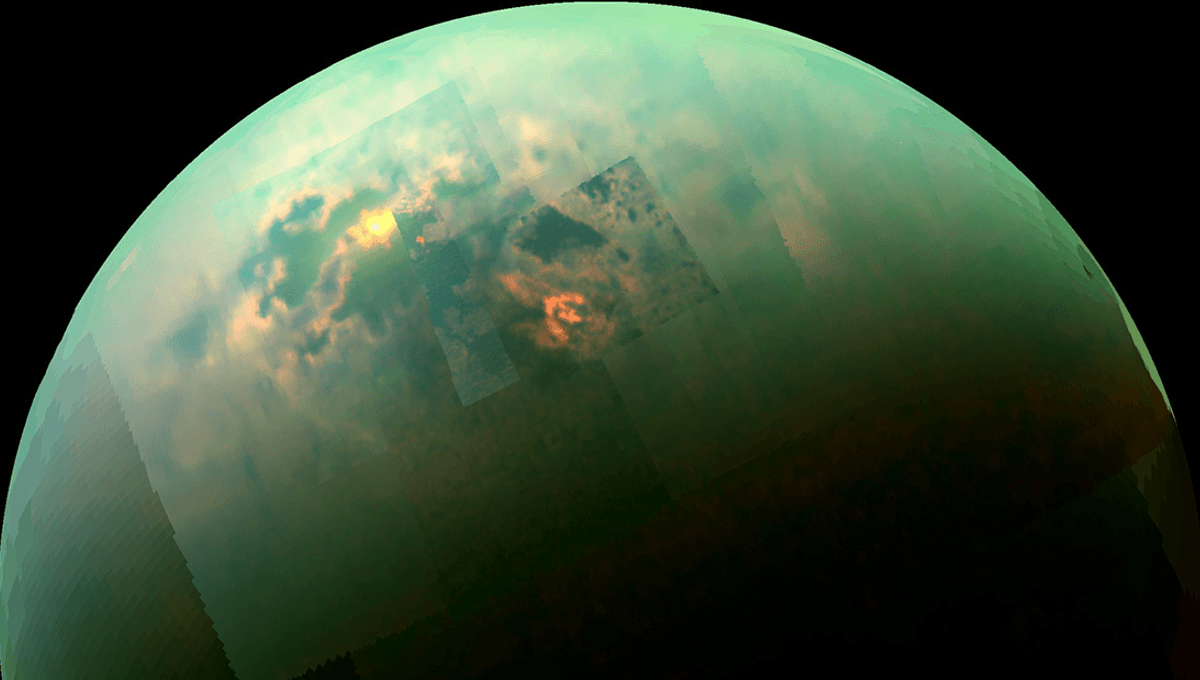A recent investigation into impact cratering on Titan has unveiled discouraging news regarding the quest for life on this moon, as well as potentially on other icy moons within our Solar System.
Titan, Saturn’s largest natural satellite, has long been considered a potential abode for life. It stands out as the sole location in our solar neighborhood, aside from Earth, where surface liquids are confirmed to exist, primarily composed of liquid hydrocarbons.
These liquid features consist mainly of methane. Of greater interest to researchers seeking signs of life is the vast subsurface ocean, estimated to surpass Earth’s oceans in volume by more than twelvefold. This ocean lies concealed beneath Titan’s icy shell, extending between 55 to 80 kilometers (approximately 35 to 50 miles) beneath the moon’s surface.
Titan’s rivers, lakes, and seas containing liquid methane and ethane could potentially create a habitable zone on its surface. However, any life forms present would likely exhibit stark dissimilarities from terrestrial life. The moon might offer environments conducive to life as we comprehend it, such as the subsurface ocean, as well as potentially fostering life forms beyond our current understanding within the hydrocarbon liquids on the surface.
While the presence of liquid water beneath the surface holds promise for sustaining life, the emergence of life necessitates organic compounds. The prevailing notion was that these organics could be delivered to the subsurface ocean through impacts from celestial bodies, where they could interact, potentially catalyzing life processes. The hypothesis suggested that the organic-rich surface would intermingle with the subsurface ocean as impacts punctuated the surface, creating pools of melted water within the ice that would subsequently sink into the ocean due to its higher density.
Regrettably, a study conducted by the University of Western Ontario sought to quantify the annual comet impacts on Titan and the quantity of organics transported to the subsurface ocean through these occurrences. The findings revealed that the amount of glycine, the simplest amino acid, reaching the ocean would be a mere 7,500 kilograms (approximately 16,500 pounds), akin to the weight of an adult elephant.
This limited influx of glycine into an ocean exceeding Earth’s oceans’ volume by twelvefold falls short of sustaining life, as highlighted by astrobiologist Catherine Neish. The challenge lies in the intricate process of transferring carbon from Titan’s surface to its subsurface ocean, essential for fostering life in that environment.
The abundance of organics on Titan’s surface relative to other moons orbiting Saturn and Jupiter dampens hopes of discovering extraterrestrial life within our Solar System. This revelation prompts a more cautious approach in the pursuit of alien life forms within our cosmic vicinity, steering the scientific community towards a more realistic outlook.
Nonetheless, there remains a glimmer of hope. Possibilities for life persistence exist if surface organics surpass previous estimates, if organics originate from the moon’s core, or if alternative mechanisms transport organics from the surface to the ocean depths.
Exploring Titan’s organic-rich surface composition poses a challenge due to its obscuration by the moon’s dense atmosphere. Direct sampling of the surface through landing missions becomes imperative for determining its organic makeup.
NASA’s upcoming Dragonfly mission aims to address this by deploying a rotorcraft to navigate Titan’s terrain. Neish, a member of the Dragonfly team, anticipates that this endeavor will facilitate the identification of promising landing sites.
The study shedding light on Titan’s habitability challenges, while discouraging, underscores the existence of intriguing prebiotic environments near the moon’s surface. These regions could hold vital clues accessible to Dragonfly’s instruments, enhancing our understanding of potential life emergence on diverse planetary bodies.
